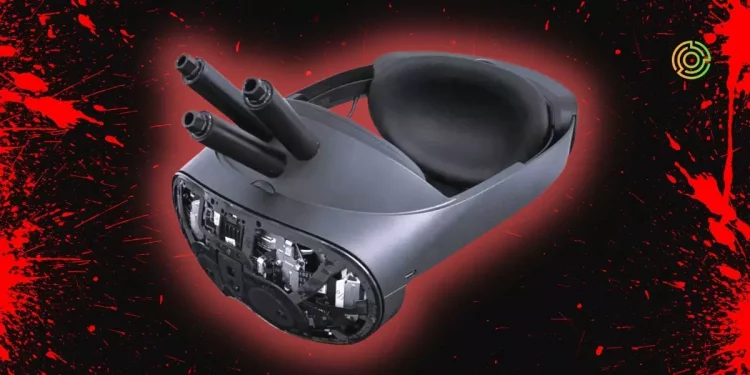The founder of virtual reality (VR) company Oculus says he has designed a new headset that can kill you in real life if you die in a game.
Palmer Luckey said the device was inspired by Sword Art Online, the Japanese novel series turned anime in which players are trapped in the role-playing game in which death in the game means death in real life because of the killer “NerveGear” headset.
"This might be a game, but it is not something you play."
To commemorate the Sword Art Online Incident of November 6th 2022, I made the OQPNVG, the first virtual reality device capable of killing the user – if you die in the game, you die in real life.https://t.co/F3nkP5EU61
— Palmer Luckey (@PalmerLuckey) November 6, 2022
Luckey launched Oculus in 2012, before selling it to Facebook for $2 billion (€1.99 billion) in 2014.
During that time he created the Oculus Rift and other VR objects that are the basis of Meta’s big bet on the metaverse, a virtual place where you can play games, work and meet people online.
“The idea of connecting real life with the virtual has always delighted me: eya that take the stakes to the highest level and force people to think about how they interact with the virtual world and the people who inhabit it,” Luckey wrote.
“Only the threat of dire consequences can make a game real for you and everyone involved.”
https://www.youtube.com/watch?v=i7FgScb6YvE
‘Game Over’ Drives You Crazy
Luckey, who left Oculus in 2017 and founded Anduril Industries, a high-tech military contractor, later clarified that he was working on a real-world version of NerveGear and was “halfway there.”
“The bad news is that, so far, I’ve only figured out the half that kills you,” he wrote. “Half of the perfect VR equation is still a long way off.”
Luckey explained that the device is linked to “three burst-loading modules” that are connected to a “narrow-band photodetector that can detect when the screen flashes red at a specific frequency.”
“When an appropriate game screen appears, the charges explode, instantly destroying the user’s brain,” he said.
Other similar experiments
In 2001, a facility called “PainStation” threatened people who lost a game of Pong with “sensations such as heat, shock and time-varying electric shocks,” as Wired described at the time.
The game would only stop when the player felt the pain was too intense.
That same year, in the “Tekken Torture Tournament,” 32 participants played the popular Playstation fighting game Tekken 3 while wearing arm straps that administered “non-lethal electric shocks corresponding to the injuries sustained by their on-screen avatars.”
Fast forward two decades and we’re now talking about a state-of-the-art virtual reality headset.
Mind you, Luckey cautions that this new system is not perfect.
“There are a variety of drawbacks that can occur and kill the user at the wrong time,” he wrote, “That’s why I didn’t dare use it myself.”
At this point, the killer helmet is just a piece of desktop art, a provocative reminder of the uncharted waters of game design.
Follow us on our social networks and keep up to date with everything that happens in the Metaverse!.
Twitter Linkedin Facebook Telegram Instagram Google News











































